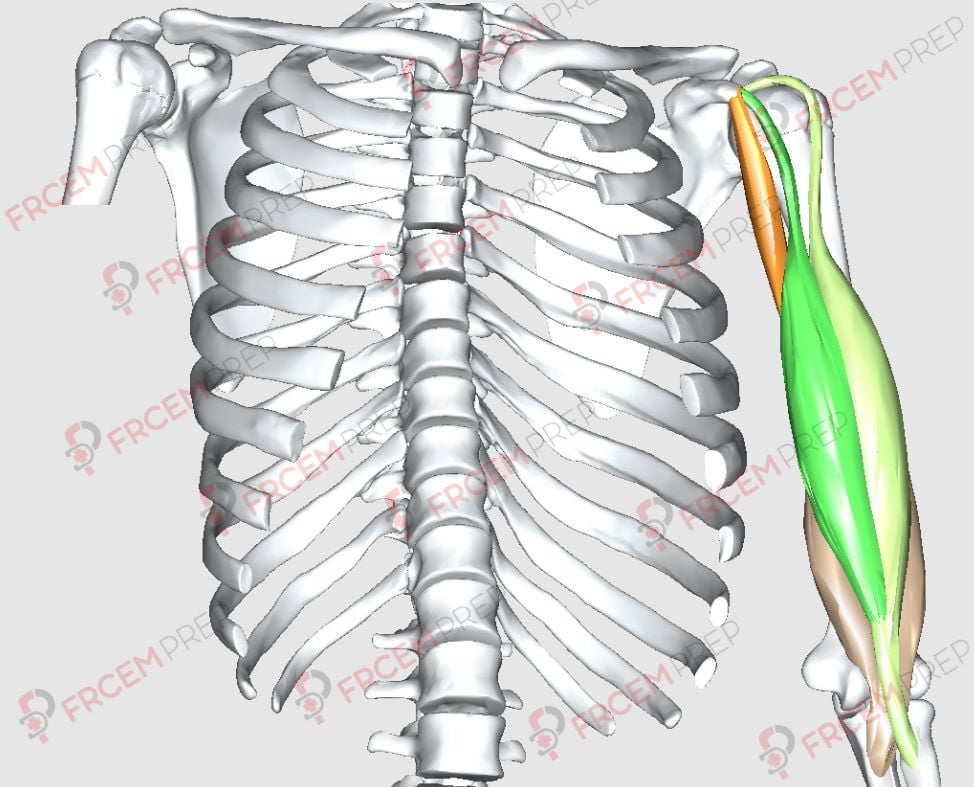Actions & innervation of Biceps Brachii.
Knowledge of origins & insertions is NOT required but an appreciation of the surface topography is required.
Curriculum
| Origin | Short head – Coracoid process of Scapula Long head – Supraglenoid tubercle of Scapula |
| Insertion | Radial Tuberosity |
| Nerve supply | Musculocutaneous nerve |
| Actions | Shoulder joint – Weak flexion of arm Elbow – Flexion and Supination of forearm |
Though the curriculum says origin and insertion not required, we’ve included them as that knowledge will help you understand the movements better based on muscle orientation. As this muscle has 2 heads, it’s named Biceps (~ Triceps = 3 heads)

Biceps brachii muscle Origin and Insertions – Image modified from BodyParts3D, © The Database Center for Life Science licensed under CC Attribution-Share Alike 2.1 Japan
The orange colored muscle is coracobrachialis.
The wider brownish muscle is the Brachialis.
Darker green one is the Short head and Lighter green is the long head of Biceps brachii muscle.
When it inserts on the Ulna, it goes between 2 heads of flexor digitorum profundus.
The position of muscle covers both Shoulder joint and Elbow joint. When it contracts, it can pull the entire arm anteriorly (Weak flexion) and It’ll pull the forearm anteriorly (flexion) and also pulls radius up (like rotating the forearm laterally) causing supination.
All the anterior arm muscles – Coracobrachialis, Brachialis and Biceps brachii are supplied by the same nerve – The Musculocutaneous nerve, the terminal branch of the lateral cord of the brachial plexus (C5-C7). The nerve becomes lateral cutaneous nerve of forearm to supply lateral part of forearm. Muscles of Upper Arm and Skin of Forearm are supplied.
Relevant pearl